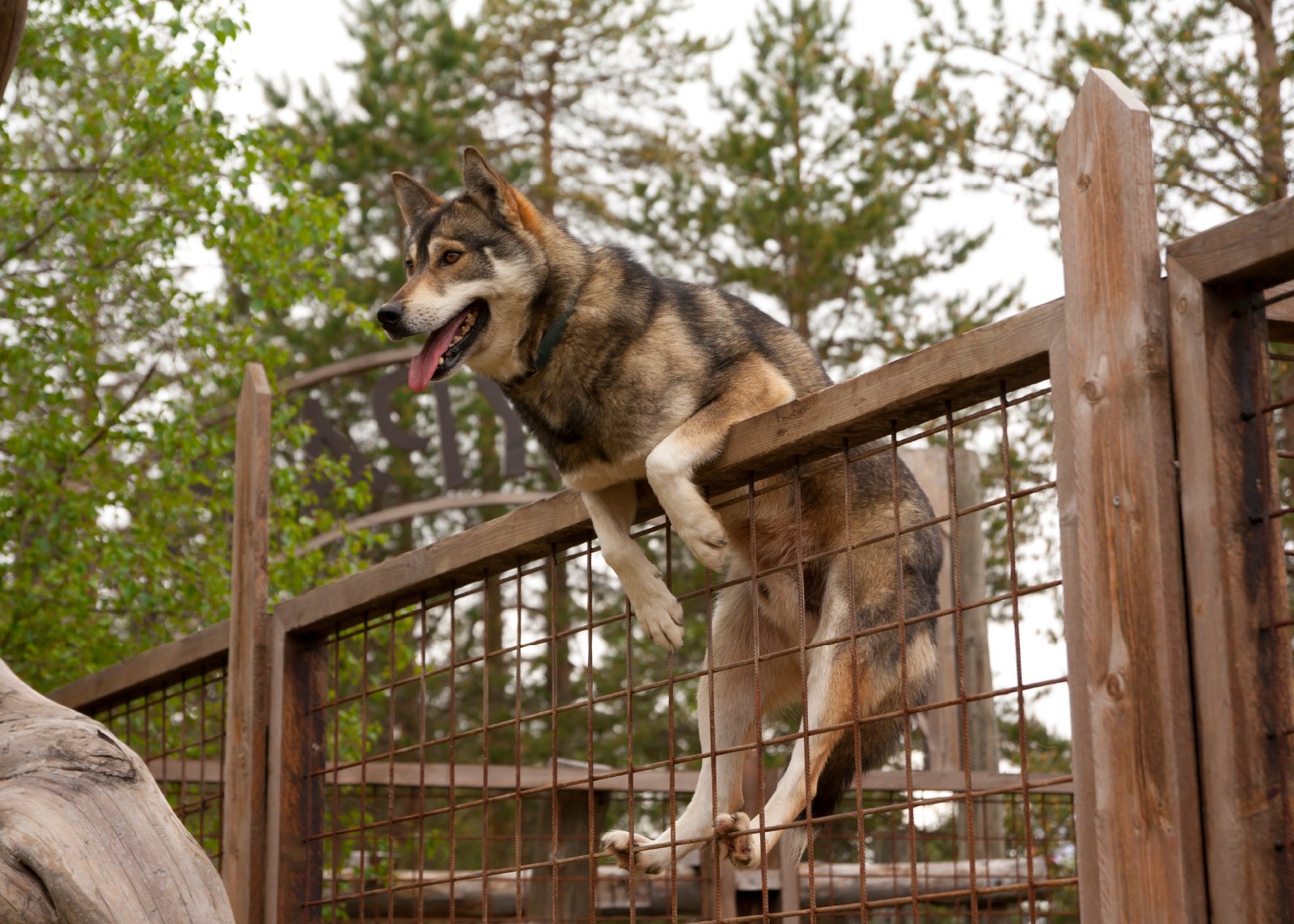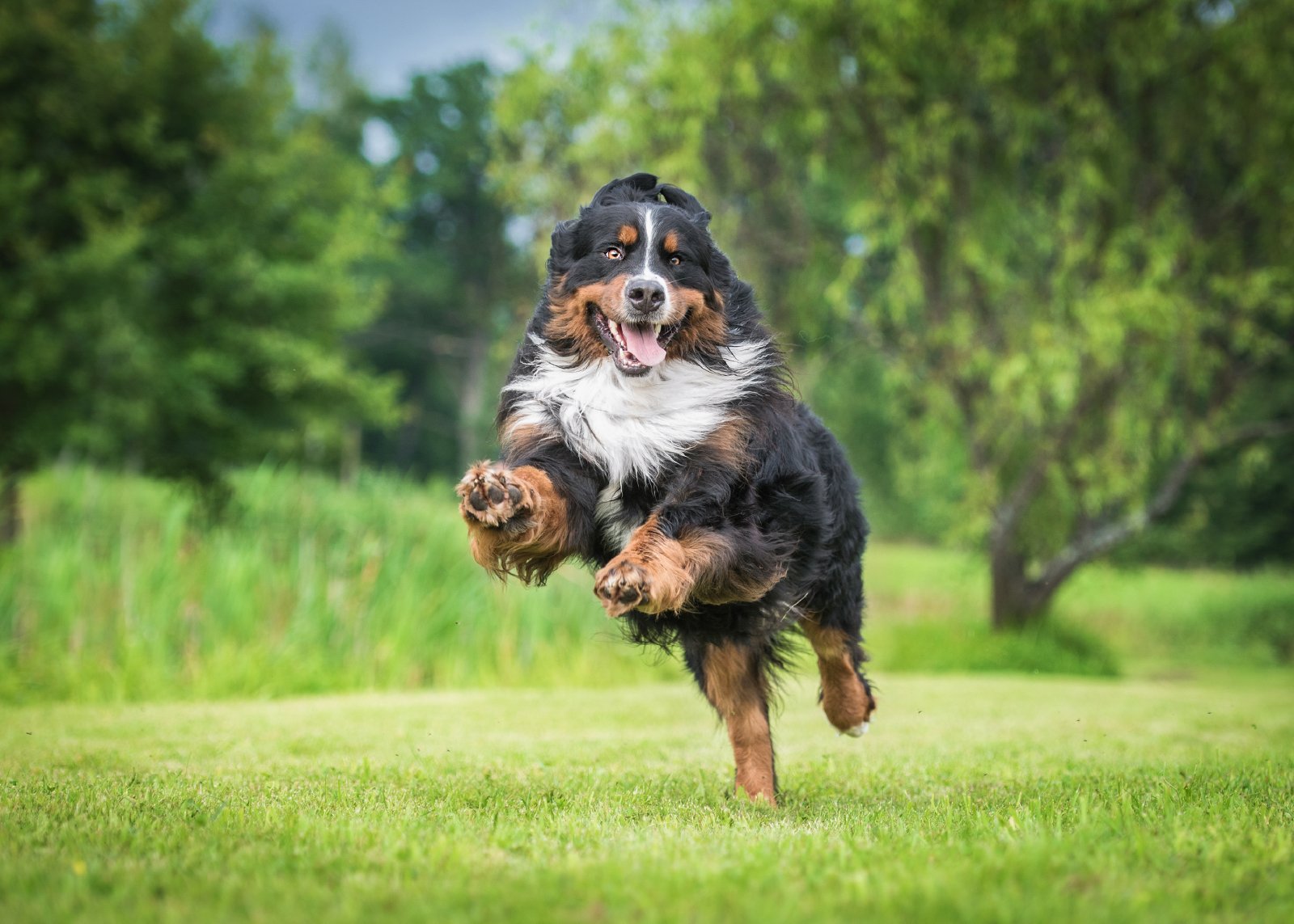8 Tips for Building an Outdoor Dog Fence
A dog rests its chin on a wooden picket fence as it looks out of the yard.
One of the first things people think about doing once they have a dog is installing an outside dog fence to protect their newest family member from harm. Outdoor dog fencing allows you to have peace of mind when you allow your dog some time to play in the yard.
In this post, we’ll look at some dog owners’ biggest questions and concerns about dog fences like:
Why should I install a dog fence?
8 essentials for building good dog fences outdoors
What type of outdoor dog fence should I build?
How to keep a dog from jumping the fence?
How to keep dogs from digging under a fence?
Dog fence repair and maintenance
Why should I install a dog fence?
Fencing for dogs is a critical part of being a good dog owner if you want to allow your dog to go outside safely without a leash. And it is a better option, according to many dog trainers, than an electric fence that would cause pain, which may lead to behavioral problems later. The last thing you want is for your new furry best friend to end up feeling afraid and insecure.
Having an outdoor dog fence provides a lot of extra outdoor living space for your dog to be able to play, run, and enjoy time alone, with your other dogs, and with the rest of the family. A fence for your dog also prevents other dogs and predators from being able to attack your dog.
A tall wooden dog fence in Columbia, SC with pine trees in the background built by Boots On Enterprises.
8 essentials for building good dog fences outdoors
When you are trying to decide on the right dog fence for your dog(s), there are a lot of factors to consider.
The best dog fences should be:
Made of sturdy and strong material.
Very low to the ground at the bottom.
Tall enough for your dog not to jump over.
Long-lasting.
Weather-resistant.
Scratch/bite proof.
No-dig dog fencing (if you have a digger).
Low maintenance.
Another important thing to think about is — it may be wise to choose a dog yard fence that won’t let people touch your dog or put their hands through. This will protect you from having to worry about your dog potentially biting people when you aren’t home or who aren’t invited into your yard.
A husky dog leaning over a wood and metal dog fence with green leafy trees in the background.
What type of outdoor dog fence should I build?
Dog fencing comes in a variety of materials, sizes, and colors. They all have their advantages and disadvantages.
Brick fence
This is, by far, the most expensive type of fencing for dogs. But you can build a very tall, sturdy fence out of brick that would do a great job keeping your dog safely in your yard. And the fence would be extremely beautiful and work well for privacy for your family, as well.
Chainlink fence
Chainlink is the cheapest dog fence material. It can be painted to the color of your choice. It is a very popular option because it is pretty sturdy, especially if you have metal bars on the top and bottom.
The downsides are that an outside dog fence made of chainlink does allow your dog to see people and animals outside your yard. And it doesn’t provide any privacy for your family in the backyard. Also, if you have a bigger dog, your dog may be able to jump or climb the fence. Another problem? Not all HOAs (homeowner associations) allow chainlink fencing. And if you paint your chainlink fence, it will need to be repainted every few years.
Metal fence
Metal fencing is very strong and durable. If the bars are close enough together, it can do a fantastic job of acting as a barrier to keep your dog in your yard. And you can paint it whatever color you like.
The downside is that metal fencing can be expensive and many types of metal fencing don’t completely obscure your view or prevent people from reaching their hands in to touch your dog.
A wood dog fence (built by Boots On Enterprises) with decorative post caps in the backyard of a home with white siding in a subdivision.
Wooden fence
Wooden dog fences can be built in a variety of designs from picket fences to privacy fences where there is no space between the fence boards at all. This will prevent your dog from being able to bite someone through the fence. And your dog won’t have to see anything on the other side of the fence, which may help your dog bark less and stay calmer.
Wood fences are very sturdy and beautiful. Most HOAs (homeowners associations) allow wooden fences if they follow the policies for the neighborhood.
The cons of using wood for a yard fence for dogs include that they do need some maintenance (sealing, staining, and/or painting every few years), and eventually, weathered boards may need to be replaced. And they cost more than a chain link fence.
Vinyl fence
Vinyl fences are extremely durable and long-lasting and don’t rot or have to be painted. They also look beautiful and are easy to wash off for a great low-maintenance option. You can opt for a vinyl fence whose pickets are butting up against each other for no visibility outside of the yard for your dog. This also keeps people from petting your dog or getting bit.
Vinyl fences have a downside in that they are generally pricier than wooden fences or chainlink. And they may need to be pressure washed now and then.
A big dog with his paws up on a short picket fence ready to jump the fence and get into trouble.
How to keep a dog from jumping a fence: building a dog-proof fence
If you have big dog or one who is a strong jumper or climber, you may feel like you are trying to contain Houdini in your backyard. You need a surefire way to get your dog to stay put on your property. This protects your dog from harm and helps to protect you from liability.
Here are some of our favorite ways to prevent dogs from climbing a fence.
Add height for a tall fence
A tall fence can go a long way to preventing your pooch from being able to get out of your yard. Obviously, a 3-foot fence may be able to contain very small dogs. But larger breeds, like the one pictured above, can easily clear a 3-foot obstacle.
We recommend a minimum of a 6-foot tall fence for larger dogs. And truly, just to be safe, an 8-foot fence is best.
If you already have a 4-foot tall wood fence, you may just need a lattice fence topper (or another decorative topper) to get some extra height.
Tall wood fences are also great for keeping coyotes, foxes, and deer off of your property. And they prevent wandering dogs from being able to get into your yard, as well.
Angle the top of the fence 45 degrees inward
This will prevent your fur baby from being able to get over the fence if she does try to jump.
Block the view
We like privacy fences for dogs because they completely obscure a dog’s view of passersby. A dog that can’t see people or other dogs walking past will tend to be a lot calmer (and less likely to try to get out of the yard) than one who is constantly witnessing “trespassers” strolling near the property.
Fence extenders
For a very experienced jumper, you can add fence extenders at the top of your fence that are metal brackets with chicken wire strung all along the fence that curves back into the yard to keep your dog from jumping.
Shrubbery near the fence
Planting dense shrubs in your landscaping below a fence can make it much more difficult for your dog to jump over the fence. You could even opt for a bush that has some thorns as an extra deterrent.
The right landscaping solutions can be a surprisingly big help with keeping dogs in your yard.
Fence rollers
Another option is to add coyote rollers to the top of your fence that spin freely when any animal tries to climb up onto them. They are commercially available. But you can also make them from PVC pipe and cable.
Second fence
If you have a fence that is too short, you can add an additional, taller wood fence as an extra barrier to keep your dog in your yard.
(For tips on finding a dog trainer to help with behavior issues if a fence alone is not enough, check out this resource.)
A blue merle sheltie peeks out from between wood fence boards.
How to keep dogs from digging under a fence
How do you keep your dog from digging under the fence and escaping? There are some great dog-proof fence additions that can help.
Chicken wire at the bottom of your fence
Some people bury chicken wire at the base of the fence to prevent dogs from being able to get under a fence.
Dog barrier fence
You can add a dog digging barrier fence that has thin metal posts spaced just about 2-3 inches apart that can sink way down into the ground right at the bottom of your existing fence. This will prevent your dog from being able to dig under the fence to escape. This is separate from your regular fence and a very effective way to stop digging.
Large landscaping rocks
Another option is to partially bury large rocks along the bottom of the fence line. A landscaping contractor near you can help with this project.
Need more help with a dog digging under the fence? The Humane Society has some great suggestions.
A medium-sized dog poking her head through a loose vertical fence board near some grass.
Dog fence repair and maintenance
If you have a wood fence for your dog, it’s important to keep it in good shape. A loose board, like the one above, can allow your pup to escape and get into trouble with the neighbors. Or, he might get lost, taken, or hurt.
When you have dog fences outside, be sure to check on them now and then to ensure they are still creating an effective barrier for your dog. If you see any signs of wear and tear or the fence needs painting, it’s a good time to call a fence repair company.
A very happy Bernese mountain dog running through a large yard with trees and woods in the background.
Ready to build dog fencing in the Columbia, SC area?
At Boots On Enterprises, we install dog fencing/pet fencing (vinyl or wood). We would be happy to help you build fencing for your dog(s) in Lexington or Richland Counties in central South Carolina.
And we can help with landscaping solutions that will help to keep your dog from being able to reach the fence as easily. Talk with us about landscaping stone installation or shrub installation.
Please contact us today for a FREE estimate.
Phone: 803-521-4978
Email: bootsonenterprises@gmail.com








